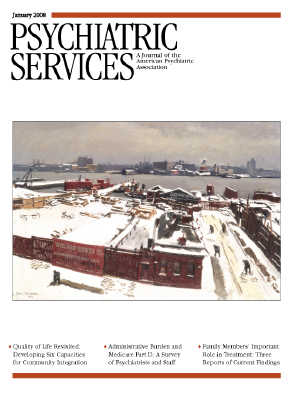Psychotic Depression
A brief introductory paragraph, reprinted on the back of this book's jacket, defines psychotic depression as "a distinct and acute clinical condition along the spectrum of depressive disorders… .often [inducing] physical deterioration, mortally dangerous acts toward self or others, or completed suicide." It further promises that "Medical readers of this book will come away able to diagnose and readily treat psychotic depression and thus will be able to serve their patients better. Non-physician readers will come away with the message that this is a terrible illness, but there is hope." It concludes that "This book fills an important gap in the realm of psychiatric literature."
Conrad Swartz, the first author, affiliated with Southern Illinois University School of Medicine, is identified as "a board-certified psychiatry professor who has written and lectured extensively on depression, anxiety, and the use of [electroconvulsive therapy (ECT)] for severe depression." He is presumably responsible for the bulk of the content. His coauthor, Edward Shorter from the University of Toronto, who has written three books on the history of psychiatry, seems to have contributed two chapters titled "History of Psychotic Depression" and "Treatment in Historical Perspective." Both chapters are well written and interesting and meet the challenge of capturing the evolution of psychiatric terminology in tandem with changing clinical concepts through modern times. Both authors have done their homework. More than 300 references are in the bibliography, and some are in several European languages as well as English, dating from 1900 to the present, one-third of them since 2000. Though 20 of the references are from Dr. Swartz's own writings, they appeared in well-respected professional publications. There are also a detailed index and two appendices offering summary guides to psychiatric concepts as well as to psychotropic medication—a very extensive inventory—and other treatment modalities.
The agenda of the book, which frequently carries a tone of frustration and even outrage at the status quo in psychiatry, is to focus attention on psychotic depression, indisputably one of the most devastating afflictions of humankind. Swartz correctly perceives that psychotic depression is misdiagnosed and improperly treated, if it is treated at all, in a shameful number of cases. His mission is to make sure that it is not missed and that it is properly diagnosed and promptly treated in an effective manner. He offers his perspectives on classification and treatment with numerous case histories to illustrate his arguments, based on years of experience in urban settings among a largely underprivileged population. He struggles mightily to bring clarity to the diagnostic morass that arguably still characterizes the nosology of depressive and related conditions, and he has little use for DSM paradigms, except for administrative—but not research or treatment—purposes. In a separate chapter, Swartz also tries to convey the depressed patient's excruciatingly painful experience of the illness and its consequences, such as posttraumatic stress disorder.
In outlining detailed treatment strategies, Swartz demonstrates hands-on expertise in psychopharmacology, but his recurring plea is for better acceptance and far more frequent use of ECT than at present. He offers evidence, personal and from a large body of literature, for ECT as being an extremely useful, even essential tool in the successful treatment of the severest of psychiatric illnesses. He makes many valid points, in my opinion. I found Swartz's categorization of psychotic depressive states—with a heavy load of bipolarity—potentially quite useful, though he has not succeeded in avoiding embroilment in the same troublesome depression descriptors such as "melancholic," "atypical," and "reactive" that he is trying to sort out for his readers, which often results in confusing, even contradictory, phraseology.
I believe this book might better engage its intended readership if it were tightly edited down to its essential diagnostic and treatment principles. However, it has practical wisdom to offer, and the crafters of DSM-V could well give thought to some of its provocative concepts.



